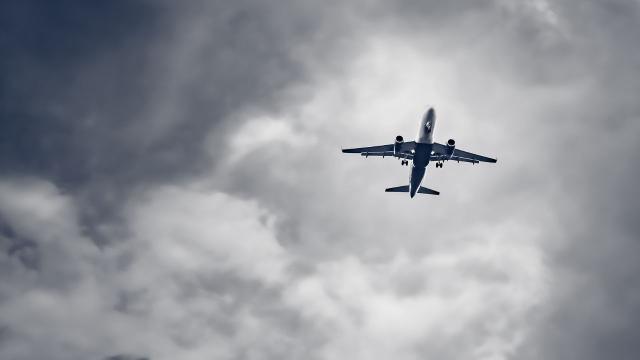Travel is a great experience that everyone should have the opportunity to try, but it’s one that can be severely impacted by the weather, particularly on flights. Weather can cause flight delays, impacts an aircraft’s flight route and probably trigger some concern in any nervous flyers on board (hello, me). So what weather events should we be paying attention to when flying, and how do they impact our trips?
Australia’s Bureau of Meteorology works closely with the aviation industry to provide forecasts for flying conditions. Here are some things it has outlined that can impact your flight.
What weather conditions can impact your flight?
Wind and storms
If you’re an anxious flyer, increased winds or storm activity that could cause turbulence likely make you very nervous.
Things that can impact a flight include strong winds running into a mountain range, significant cold fronts, wind shear and thunderstorms, just to name a few. Pilots will utilise forecasts to help them navigate difficult situations like these.
Speaking as a nervous flyer, one thing that always calms me if I’m anxious about wind or storms is to read the turbulence forecast before my flight so I know what’s coming.
Clouds
The rules around clouds and flying are quite fascinating.
Pilots need to know how much cloud cover exists and how low they are in order to plan flight routes. Smaller planes operate under ‘visual flight routes’, which means things generally need to be clear enough for them to see where they’re flying, whereas airline pilots utilise onboard technology to help them navigate significant cloud coverage.
According to BOM:
If low cloud is forecast at the destination airport the pilot will carry extra fuel. This is in case they need to circle as they wait for things to clear. They could even divert to another airport if the cloud stays around. Pilots may also delay departure to take advantage of a better weather window for take-off or landing.
Fog causes similar issues and can close airport runways, causing significant flight delays.
Temperature
Planes often fly through sub-freezing temperatures, but this can still have an impact on your flight. Supercooled water in the atmosphere can cause icing on a plane’s frame and propellers when flying, which is a serious hazard and alters the plane’s weight while flying.
On the flip side, hot weather often means a thinner and less dense atmosphere which means that the air may not be able to provide enough lift for the plane to take off. To combat this it might be necessary to make the plane lighter, which means taking less cargo or fewer passengers.
Space weather
The BOM also mentions space weather as something that can impact flights, mainly as it can interrupt radio communications and GPS signals, which pilots need to safely conduct their trips. Notice of these events from BOM can help pilots to change their methods of communication to undisrupted frequencies.
Volcanic ash
It doesn’t happen that often, but when it does, volcanic eruptions, and the ash they emit into the atmosphere, can cause havoc for flights. Just think back to the eruption of Eyjafjallajökull in Iceland back in 2010, which completely closed airports and prohibited planes from flying in Europe.
As BOM explains:
Volcanic ash is a mixture of fine pulverised rock, minerals and glass. It’s accompanied by gases which convert into droplets of sulphuric acid and other substances. It can melt in the engine, causing loss of thrust (the force that propels the plane through the air) and possible engine failure. It can cause abrasion of engine parts and the body of the plane. It can also clog fuel and cooling systems.
Air travel is pretty freaking amazing when you realise how many factors have to be taken into consideration, right? You can find out more about how BOM advises the airline industry here.

Leave a Reply
You must be logged in to post a comment.